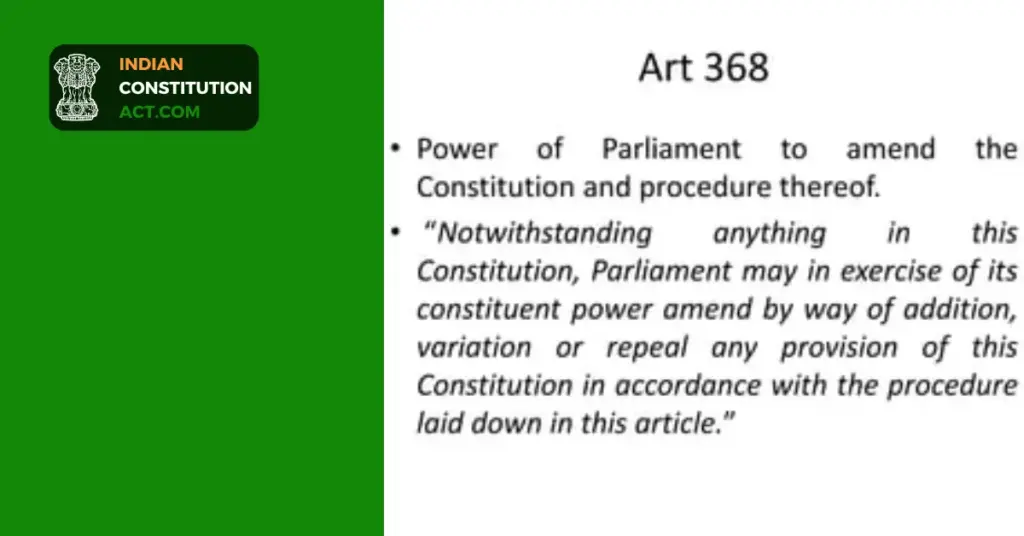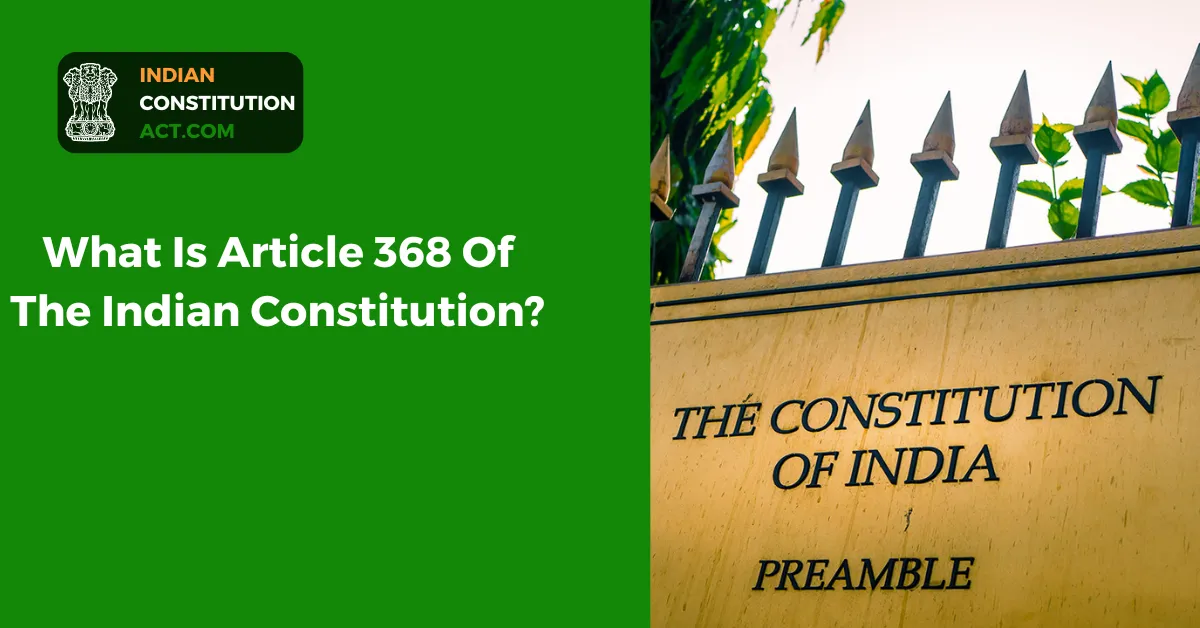Article 368 of the Indian Constitution is under part 20. It is one of the most important articles of our Constitution of India. This Constitution has provided for two types of amendments, by a special majority of parliament and by a special majority of the parliament with the ratification by half of the total states. To know everything about this article, read this entire blog without missing anything.
Table of Contents

What Is Article 368 Of The Indian Constitution?
Article 368 of the Indian Constitution, the power of parliament to amend the Constitution and procedure therefor. It provides for two types of amendments, by a special majority of parliament and by a special majority of the parliament with the ratification by half of the total states.
1) Notwithstanding anything in this Constitution, Parliament may in the exercise of its constituent power amend by way of addition, variation, or repeal any provision of this Constitution by the procedure laid down in this article.
2) An amendment of this Constitution may be initiated only by the introduction of a Bill for the purpose in either House of Parliament, and when the Bill is passed in each House by a majority of the total membership of that House and by a majority of not less than two-thirds of the members of that House present and voting, it shall be presented to the President who shall give his assent to the Bill and thereupon the Constitution shall stand amended by the terms of the Bill:
Provided that if such amendment seeks to make any change in:-
a) article 54, article 55, article 73, article 162, or article 241, or
b) Chapter IV of Part V, Chapter V of Part VI, or Chapter I of Part XI, or
c) any of the Lists in the Seventh Schedule, or
d) the representation of States in Parliament, or
e) the provisions of this article.
The amendment shall also require to be ratified by the Legislatures of not less than one-half of the States by resolution to that effect passed by those Legislatures before the Bill making provision for such amendment is presented to the President for assent.
Also read: Who Is The Father Of The Indian Constitution?
3) Nothing in Article 13 shall apply to any amendment made under this article.
4) No amendment of this Constitution (including the provisions of Part III) made or purporting to have been made under this article whether before or after the commencement of section 55 of the Constitution (Forty-second Amendment) Act, 1976 shall be called into question in any court on any ground.
5) For the removal of doubts, it is hereby declared that there shall be no limitation whatever on the constituent power of Parliament to amend by way of addition, variation, or repeal the provisions of this Constitution under this article.
Procedure For The Amendment Of The Indian Constitution Is Laid Down In Article 368
According to Article 368 of the Indian Constitution, the bill can be officially introduced either by a minister or by a private member and does not need any prior permission from the president. Each house must pass the bill separately. The bill should be passed in each house by a private member and it does not need the prior permission of the president.
As per the Constitution, an amendment of the Indian Constitution can be properly initiated only by the introduction of a bill for the purpose in the House of Parliament and not in the state legislatures. If there is any case of disagreement between the two houses there is no provision for holding a joint sitting of the two houses for deliberation and passage of the bill.
